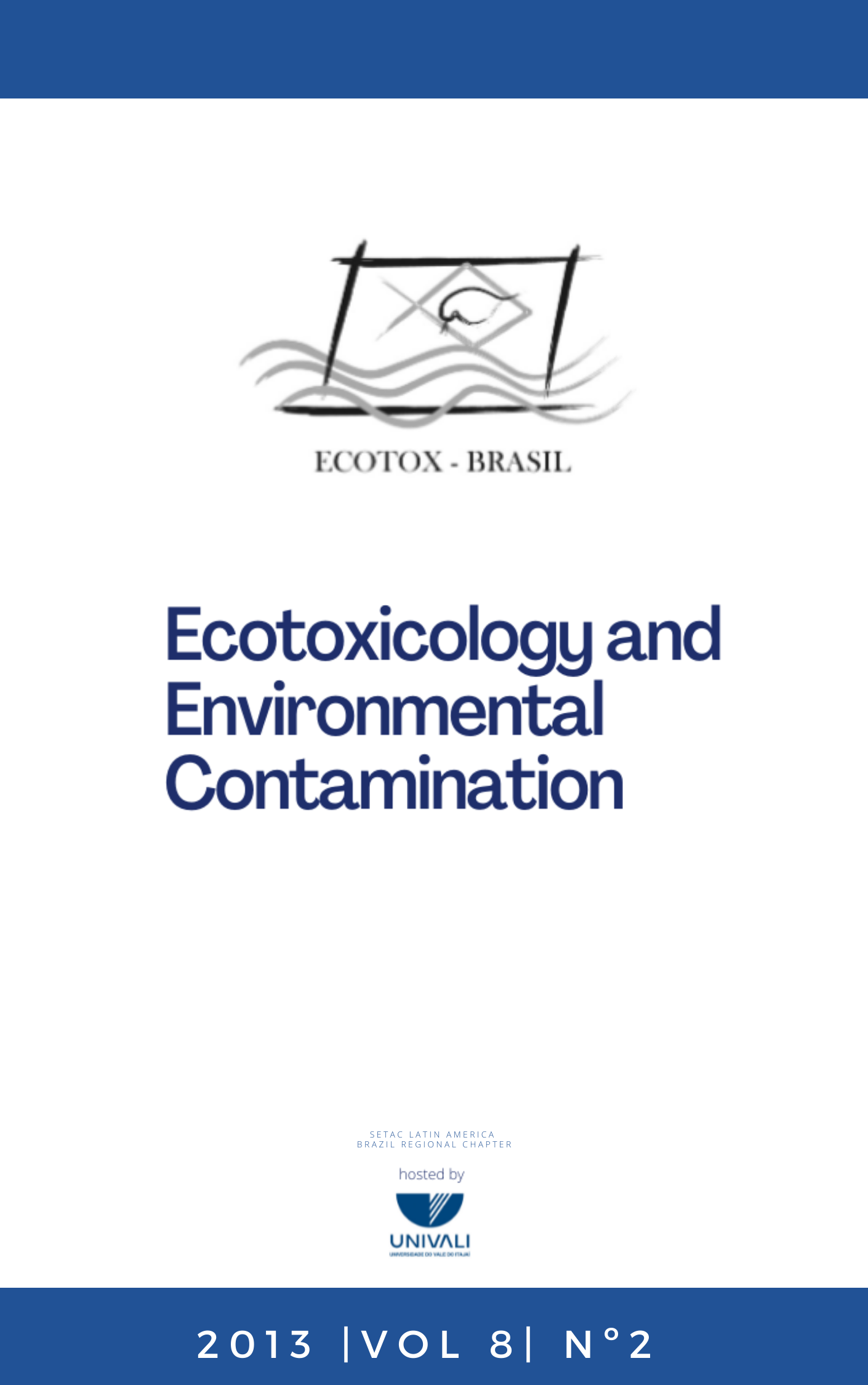Use of coal mining waste for river water treatment and evaluation of this process using physicochemical parameters and bioassays
DOI:
https://doi.org/10.5132/eec.2013.02.007Abstract
This work aimed to use calcinated coal mining waste to treat river water contaminated by residues derived from coal mines. Water samples from the Urussanga River (Urussanga, Santa Catarina state, Brazil) were collected. The pH values and the concentrations of aluminum, iron and manganese were determined before and after the treatment. Additionally, acute toxicity tests (CL50) were carried out in the microcrustaceans Artemia sp. and Daphnia magna along with root growth inhibition tests of Allium cepa L. and plasmid DNA cleavage assays. The results demonstrate that the treatment resulted in an increase in the pH and an expressive removal of metals. It was observed that the untreated water caused significant toxicity in Artemia sp., Daphnia magna and Allium cepa L. as well as fostering damage to plasmid DNA. However, after the treatment was detected reduction of the toxicity. It was concluded that the calcinated coal mining waste can be used as alternative system for the treatment of waters affected by coal mining contaminants, while the bioassays consists of an excellent tool for the evaluation of this process.
Downloads
Downloads
Published
How to Cite
Issue
Section
License
Copyright © 2006 ECOTOX-Brasil
Copyright notice: It is a condition for publication that manuscripts submitted to this journal have not yet been published and will not be simultaneously submitted or published elsewhere. By submitting a manuscript, the authors agree that copyright for their article is transferred to the Sociedade Brasileira de Ecotoxicologia (ECOTOX-Brasil) if and when the article is accepted for publication. The copyright covers the exclusive rights to reproduce and distribute articles, including reprints, photographic reproductions or any other reproduction of a similar nature, including translations. No part of this publication may be reproduced, stored in a retrieval system or transmitted in any form or by any means, electronic, mechanical, photocopying, recording or otherwise, without permission of the publisher.
Notice: While every effort is made by the EEC, editors and editorial board to see that no inaccurate or misleading data, opinions or statements appear in this journal, they wish to make it clear that the contents of the articles and advertisements published herein are the sole responsibility of the contributors or advertisers concerned. Accordingly, the EEC, the editorial board and editors and their respective employees, officers and agents accept no responsibility or liability whatsoever for the consequences of any inaccurate or misleading data, opinion or statement.




